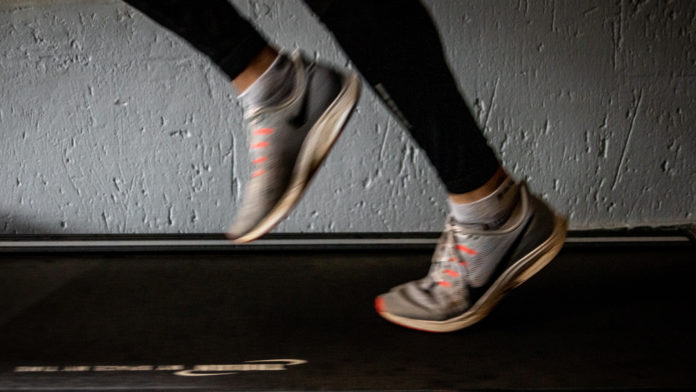The health benefits of exercise during cancer therapy are widely recognized. Physical activity helps patients reduce depression and anxiety, boost energy and strength, and even manage pain. However, these benefits are generally thought of as supportive care, and not as part of the treatment itself.
But exercise could actually bolster the cancer-fighting effects of chemoradiation, helping tumours completely disappear in a larger number of patients.
A small clinical trial assessed outcomes for 36 patients with rectal cancer being treated with neoadjuvant chemoradiation to shrink their tumours before surgery. Half were randomly assigned to usual care, and the others added supervised high-intensity interval training on a treadmill three times a week.
Over half (56 percent) of the exercise group saw their tumours get to pathologic complete response or near pathologic complete response with chemoradiation therapy alone — meaning that either no cancer cells, or only single cells or rare small groups of cancer cells were seen in their post-treatment biopsies, even without surgery. This compares with only 18 percent in standard care group.
The study was led by researchers at the University of Alberta and published in Clinical Colorectal Cancer.
The authors point to previous studies that might explain why exercise improves patient outcomes. Most solid tumours have abnormal blood vessels that can’t keep up with the oxygen demands of rapidly growing cancer cells. This leads to pockets of low oxygen concentration, and because chemoradiation relies on the creation of reactive oxygen species to work, cancer cells in these pockets can survive treatment.
Previous studies have demonstrated that when exercise gets the heart pumping, it moves more blood through the tumour and improves oxygenation. Over time, exercise can even help abnormal tumour blood vessels become more normal, eventually leading to better oxygen levels for treatment around the clock.
The authors believe this higher oxygen environment in the tumour could explain why treatment with exercise is more effective.
The team acknowledges that the study was small. They originally hoped to recruit 60 patients but were only able to find 36 participants for the study. This smaller sample size means that the results are less reliable than a larger study would be. Given the promising preliminary results and safety of the exercise sessions, the authors believe a larger trial should be carried out to confirm their findings.
Chemoradiation doses are limited by side effects, but exercise could help that same dose work better, and it could even help more patients avoid surgery altogether. If the results seen in this trial hold, exercise could become an essential part of cancer care — not just for quality of life, but for cancer remission.








































